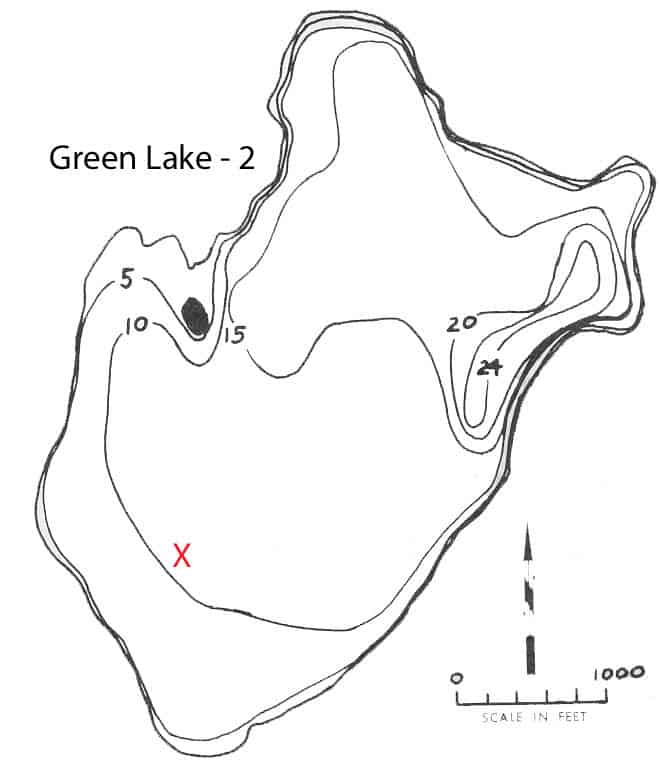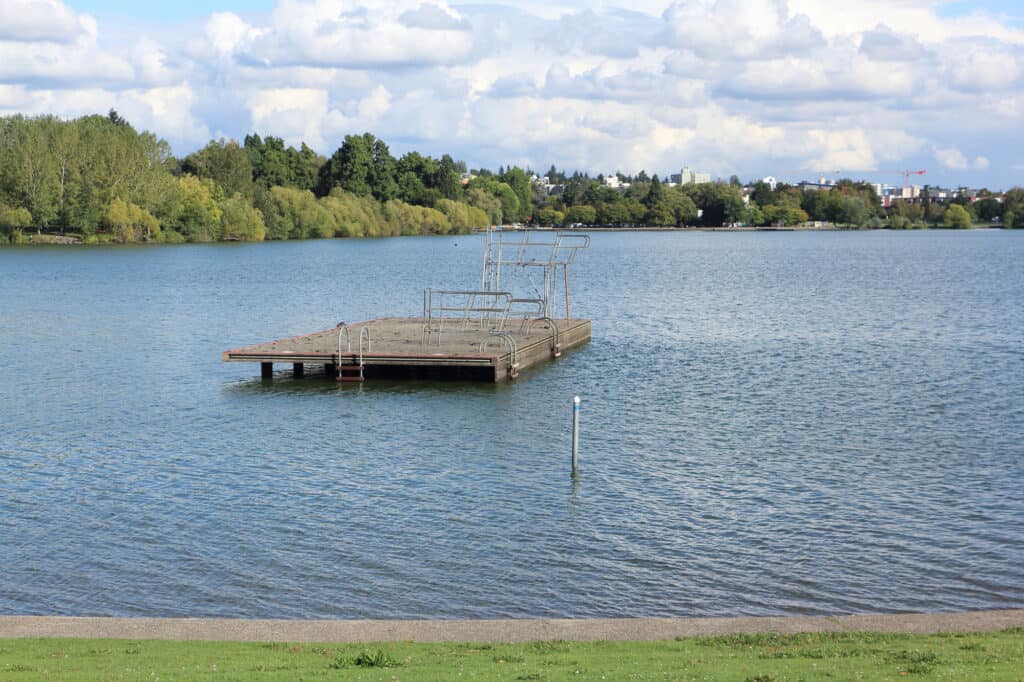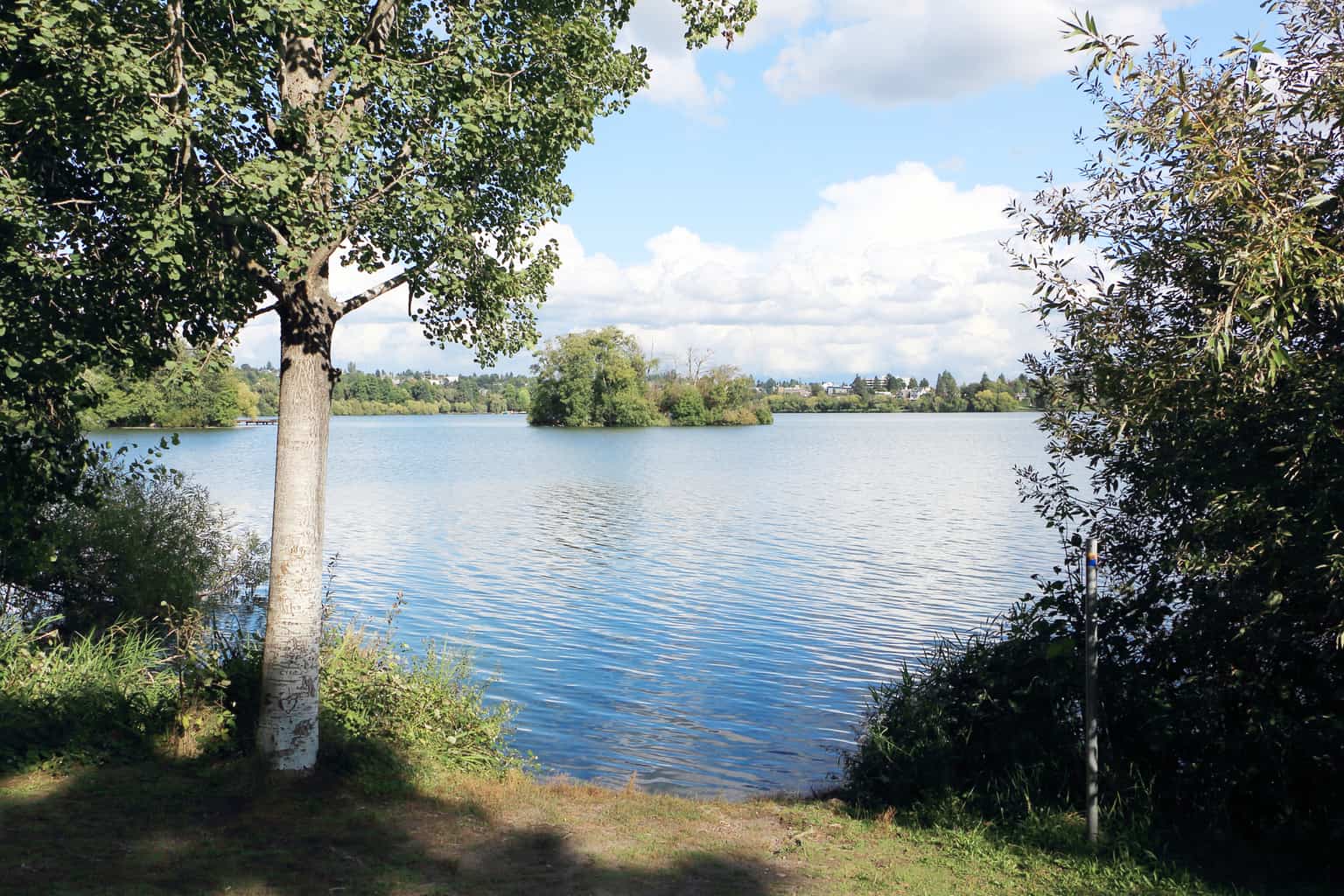If heaven is a place on Earth and that place is close to home for the Seattle-area sport angler, it just might be Green Lake.
Green Lake is stocked annually with more than 30,000 rainbow trout. It has a year-round fishing season, with trout prospects ranging from fair to excellent all year long.
The lake is ringed by park space, with Woodland Park in the south adjoining Green Lake Park in the north. This means there is shoreline access all the way around the lake, both from the bank and multiple fishing piers.
The 250-acre lake is nestled in the heart of Northwest Seattle, in between Highway 99 and Interstate 5. There’s even a neighborhood of Seattle that’s named for the lake.
They say variety is the spice of life. If you’re not interested in rainbow trout, there are also brown trout in the lake — as well as largemouth bass, rock bass, channel catfish, common carp, pumpkinseed sunfish, brown bullheads and more.
Small watercraft are allowed on the lake, although no motors are permitted. Boat launching is from the undeveloped shore only.
Trout Fishing
The Washington Department of Fish and Wildlife describes Green Lake as one of western Washington’s best urban trout fisheries. It’s not hard to see why.
The state’s annual stocking schedule at last check called for 12,000 fry and fingerling brown trout to be planted in January at Green Lake.
This type of stocking gives these young fish the opportunity to grow and feed in the wild, developing more succulent flesh that is highly prized by anglers.
The put, grow and take strategy is used again in the fall with some 15,000 rainbow trout.
With usual the winter slowdown in sport fishing, this October planting gives rainbow trout some time to put some meat on their bones and live out more of their natural life cycle in the lake.
Of course, there are also catchable plantings: 11,000 standard rainbow trout from March to May, according to the recent schedule, and then 5,300 “jumbo” trout planted in November will provide a colder-season fishery.
Fishing prospects should be excellent much of the time from mid-March through June for rainbow trout and then again in the late fall, after major plantings of legal fish.
The rest of the year doesn’t offer the same catch rates, but trout fishing is viable year-round at Green Lake thanks to the huge numbers of fish stocked every year. Warm summertime temperatures are likely to bring the least trout-fishing success.
Brown trout are more seldom seen, but aside from the high summer months of July and August, anglers still have fair prospects to encounter brown trout at Green Lake all year.
If you’re new to trout fishing or need a refresher, find more information in this article: Trout Fishing: Basic How-To Techniques and Tips.
Green Lake is quite shallow, with the vast majority less than 20 feet deep. The only slightly deeper areas are in the northeast part of the lake.
From boat or bank, the deepest water is fairly close to shore from the East Green Lake Beach and play areas south to about the end of N 65th Street, where there’s a small pier.
Trout and other game fish may seek out deeper waters at certain times of the year. In summer, for example, the deepest water may also be the coolest.

Bass, Carp and Panfish Fishing
Common carp are an invasive species in Washington, and the state encourages fishing for them. There is no daily limit on carp, and anglers don’t even need a fishing license to take carp.
Carp don’t like resistance in their bait, so keeping a slack line on open-faced spinning reels is popular, and bobbers aren’t recommended.
Carp can reach mammoth sizes in low-elevation lakes like this and put up a tremendous fight that might make you forget they are not largely prized as a food fish in this country.
Green Lake hosts both a “true” bass, the ever-popular largemouth bass, and a “false” bass, the rock bass, which is technically a member of the sunfish family.
Fishing for largemouth bass is fairly straightforward: Remember they have large mouths, so use large lures or bait hooks.
Bass lures often resemble their prey, including smaller fish, crayfish and frogs. If you’re persistent and a little lucky, surface lures fished on warm summer nights can result in explosive strikes, something you won’t soon forget.
While bait is effective for bass, we suggest only using bait if you’re planning to keep what you take, since bass will often swallow a nightcrawler and other natural bait and fatally injure themselves.
Rock bass aren’t particular about lures or baits and tend to be aggressive biters, but use far smaller lures and baits than with largemouths, because these sunfish that look a little like a smallmouth have fairly small mouths indeed.
Expect them to put up a substantial fight for a fish of their size (typically under a pound).
Speaking of fishing with smaller baits, lures or flies, you might also catch pumpkinseeds, which are small but beautifully colored members of the sunfish family.
Bass, panfish and carp tend to become more active in the warmer months, but they still don’t tolerate extreme heat all that well. Try fishing for them in the mornings and evenings from June through August.
Tiger muskies have been stocked in Green Lake in the past to control carp and panfish populations, although the plantings were quite long ago at this point and it is very likely these fish have surpassed their lifespans.
Catfish Fishing
Green Lake hosts resident populations of both channel catfish and their smaller cousins, the brown bullhead.
Channel catfish are one of the most popular game fish in Washington and can fill in the slower summer trout-fishing summer months with an excellent eating catch.
They run the gamut in size, with the largest officially recorded catch in Washington weighing in at a whopping 37.7 pounds.
But a Green Lake angler caught a self-weighed 45-pound channel catfish, and a potential state record, in 2018, but it didn’t become the actual state record because he gutted the fish before it could be weighed on a sanctioned scale.
With that kind of potential, and lots of regular-sized catfish, we’ve included Green Lake in our rundown of the very best catfish fishing lakes and rivers in Washington.
Most stocked catfish come in under the 10-pound mark, and usually well under that, and relatively smaller catfish are better for eating.
Brown bullheads are comparatively much smaller, typically weighing less than 4 pounds, although record-threatening bullheads have been known to exceed 10 pounds on rare occasions.
All catfish are bottom-feeders, and the best fishing for them will be done at the bottom of the lake.
Catfish are notorious for eating pretty much anything they can fit their broad mouths around, so nearly any type of bait can be effective.
Chicken livers are a classic catfish bait, partly because they don’t appeal to many other common game fish, but nightcrawlers and worms, cut fish and shrimp, and prepared dough “stink” baits are among the other options.
While many city parks close at sundown, Green Lake Park is open 24 hours.
That schedule is great for the avid catfish angler, because catfish tend to be most active feeding at night, and many anglers swear by nighttime as the best time to fish for catfish.
There are some differences between fishing for catfish in the day versus at night, and daytime fishing for catfish is entirely viable as well.
Where is Green Lake?

Green Lake is smack-dab in the middle of Northwest Seattle.
Take exit 170 from Interstate 5 and head northwest. Ravenna Boulevard leads straight to Green Lake Park.
Highway 99, signed locally as Aurora Avenue North, hugs the western edge of the lake and cuts through Woodland Park immediately to the south.
Boat-toppers can be launched from shore. Motorized watercraft are not allowed on Green Lake, and there are no ramps to launch trailered boats anyway, so only bring what you can carry to the bank.
As one might expect at an urban fishing lake, there is no shortage of amenities in the area, including nearby restaurants, cafes, and bars and taphouses.
You can combine your fishing with picnic areas, athletic fields and courts, playgrounds and other activities in the parks.
The popular Woodland Park Zoo is just a short walk southwest from the lake.
Swimming is permitted at Green Lake, where there are designated swim areas, so be aware of swimmers and other park users when fishing near other people.
Find more fishing spots in King County
Washington Resources
WDFW Fishing and Stocking Reports
WDFW Fishing Regulations
National Weather Service forecasts

